NYC residents urged to FLEE basement apartments as post-Tropical Storm Ophelia sends life-threatening rainwater down on the city
New Yorkers were warned to leave their basement apartments and prepare to seek higher ground as post-tropical cyclone Ophelia lashed the East Coast with wet weather on Sunday.
The last named storm of the hurricane season is dying down after making landfall near Emerald Isle, North Carolina, on Saturday with 75 mph winds before battering New Jersey with 10-foot waves and heavy rain.
New York City is now reeling from the eventual effects of Ophelia and Washington, D.C., officials are also anticipating flooding as they laid sandbags in flood-prone areas on Sunday.
NYC Emergency Management Commissioner Zach Iscol said, “Although the warmer days of summer are behind us, New Yorkers should take precautions regarding the forecast of high winds and rain during our first weekend of fall,” he said.
“This weekend’s weather is also a reminder that we are still in the middle of Atlantic hurricane season and it is a good time to review your preparedness plan for your home or business, especially if you live in flood-prone areas.”
A weather map showing the aftermath of post-tropical cyclone Ophelia off the east coast as of 12:50 a.m. Monday
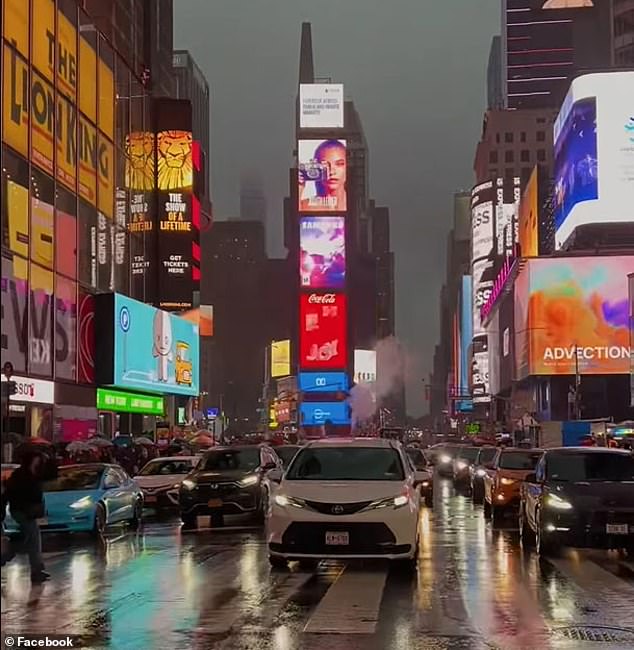
Torrential rain in New York’s Times Square on Sunday
The press release included tips on how to stay safe, including using public transportation to prevent city residents from driving onto flooded streets.
It also called on those living in basement apartments to prepare to move to higher ground in case of dangerous flooding.
Midtown Manhattan, Prospect Park and Harlem were expected to receive 1.81, 1.71 and 1.41 inches of rain, respectively, Sunday night, according to the National Hurricane Center.
The agency warned Monday morning of additional rainfall of 1 to 3 inches spreading across the northern Mid-Atlantic, southern parts of New York and southern New England.
Localized flooding, urban and small stream flooding, as well as isolated river flooding were possible.
The NWS forecast continued light to moderate rain through Sunday night, with most of the rain falling between 10 a.m. and 6 p.m. Continuous showers were possible until Monday.
“Widespread areas of low lying and poor drainage flooding will be possible during periods of heavy rainfall and isolated flash flooding cannot be ruled out,” the press release said.
It also warned of coastal hazards, including “a high risk of life-threatening rip currents, large breaking waves and rough surf on Atlantic Ocean beaches.”
As of Sunday, the biggest hazards in the area were rain and surf in New York, plus elevated water levels due to storm surge in parts of the Chesapeake Bay.
The storm-generated swell was expected to create deadly waves and rip current conditions.
Despite the dreary rainy weather, New Yorkers flocked to the Global Citizen Festival in Central Park on Saturday evening, where they braved the rain to see artists like the Red Hot Chili Peppers and Lauryn Hill.
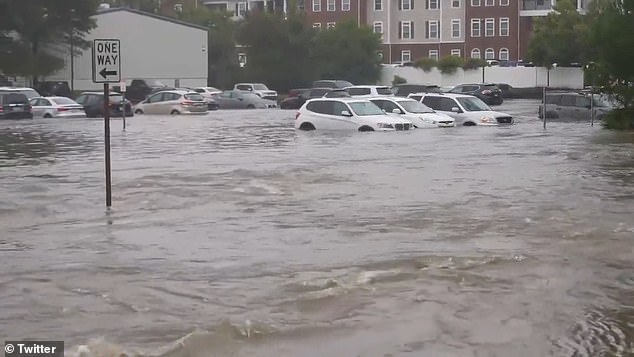
In North Carolina, roads and streets were flooded, preventing cars from driving through the floodwaters. Yesterday, the National Hurricane Center reported that the storm made landfall near Emerald Isle, North Carolina, just after 6:20 a.m. The storm had maximum winds of 120 km/h, with sustained winds of 100 km/h
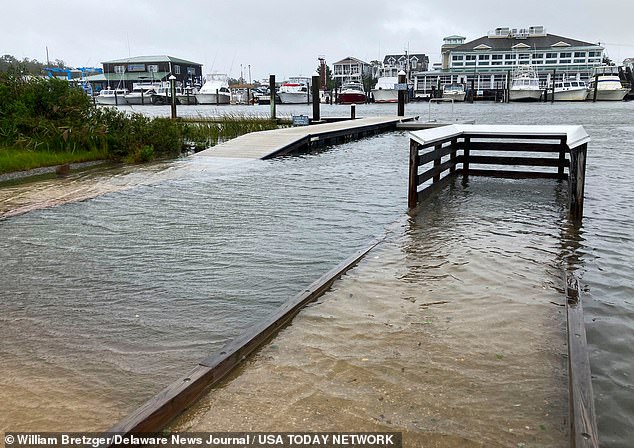
A tropical storm warning was issued from Cape Fear, North Carolina, to Fenwick Island, Delaware. In North Carolina, a hurricane watch was also in effect for the area north of Surf City to Ocracoke Inlet
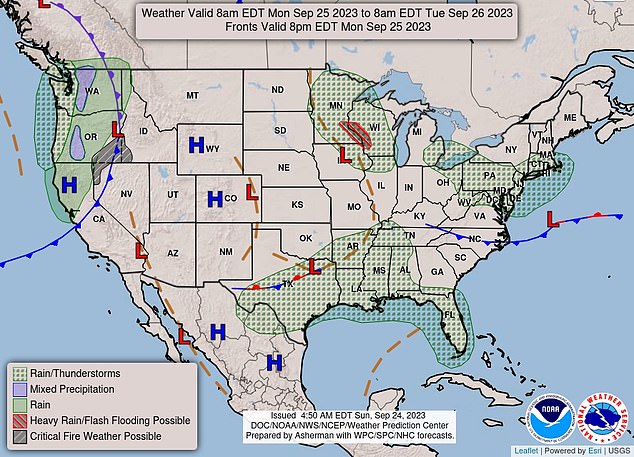
NOAA’s forecast shows storms in part of Pennsylvania, West Virginia, Delaware, Maryland, New York, Rhode Island, Connecticut and Michigan Monday morning through Tuesday as post-tropical storm Ophelia dissipates
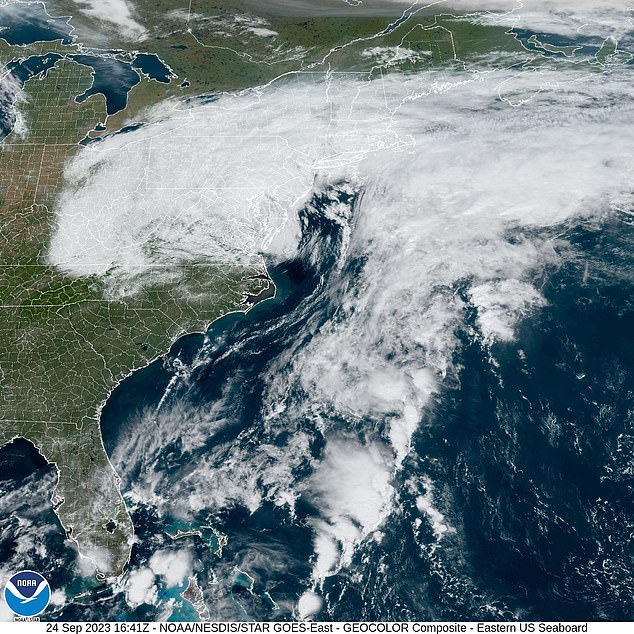
NOAA map showing post-tropical cyclone Ophelia over the US East Coast on Sunday
On Sunday morning, 2,600 people lost power in North Carolina. That number nearly doubled in New Jersey.
Ophelia was a near-hurricane tropical storm when it crashed near Emerald Isle, North Carolina, on September 24.
It knocked out power and flooded coastal streets. States of emergency were declared in Virginia, North Carolina and Maryland.
